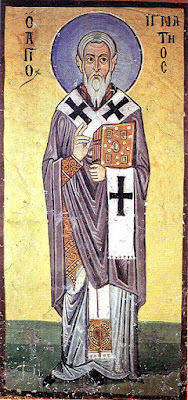 St. Elias Ardounis the Neomartyr (Feast Day - January 31 and Sunday of the Holy Myrrhbearers)
St. Elias Ardounis the Neomartyr (Feast Day - January 31 and Sunday of the Holy Myrrhbearers)Verses
A fire inflames you Elias the crown-bearer,
Having as a garment the fire of love for God.
Saint Elias was a barber in the town of Kalamata in Peloponnesos and much respected for his shrewd good sense and experience in political affairs by the Turkish officials of the place. One day, when the latter had come to see him, Elias urged them to do all they could to reduce the burden of taxation on Christians which the Turks had imposed on them, or many would be led to deny their Christian faith and become Muslim merely to be relieved financially. The discussion grew heated and Elias was carried away to the extent of declaring, almost jokingly, that he himself was inclined to deny his faith in return for a fez. One of the Turks took him at his word and handed him the headgear, whereupon poor, benighted Elias adhered to Islam in the presence of the judge and to the sorrow of the local Christians.
Not long after, he was moved to repentance when he realized the gravity of what he had done, and traveled to Mount Athos. There he found a spiritual father and confessed with many tears his apostasy and once again acknowledged Orthodoxy; he was also chrismated and received the Body and Blood of Christ. Elias eventually became a monk on Mount Athos, where he led a virtuous life for eight years. However, as he could not attain peace of conscience, he received the blessing of his spiritual father to offer himself for martyrdom.
Elias returned to Kalamata, and made his presence known by walking around the bazaars of the Turks. When he was called Moustafa and questioned why he was gone for so long, he responded he was no longer Moustafa but an Orthodox Christian. With this he began to ridicule Islam and confess Christ as the true God. They in turn struck and pushed at him, and dragged him to the judge. Presented before the judge, Elias confessed Christ in like manner. For this he was imprisoned and shackled in chains for many days. After the second session of questioning, the judge saw his steadfastness of faith, so he was condemned to be burned to death in a slow fire. On his way to the flames a Turk slashed his back with the sword, but he gained greater courage for the trial and proceeded along joyfully singing the Psalms of David. But when he was thrown into the pile of green wood, he was suffocated almost immediately and his hair, beard and monastic cassock were left miraculously untouched by the flames. This occurred on January 31, 1686. That night a heavenly light appeared over his body, of which it was said by the Christians that since the earthly fire could not burn him that God sent His heavenly light to do the job.
The local Christians ransomed his body with money and buried him with great devotion, and as they were in procession the entire area was filled with a beautiful aroma coming from his relics. A church was later built over his tomb. His holy skull is in the Holy Monastery of Voulkanou in Messinia and is processed on the Sunday of the Holy Myrrhbearers, which is the day of his feast (February 2 is also a major feast in Kalamata because of the Cathedral of the Presentation of Christ). He was also martyred next to the Church of the Holy Forty Martyrs, which was built by the Christians in honor of the Saint, but was named after the Holy Forty Martyrs for fear of the Turks; after the Turkish occupation it was named in honor of Saint Elias.
At Kalamata, the mother of a certain teacher, named Dionysios Podaros, who recorded his martyrdom, took a portion of the Saint's relics and kept it in her home. There, one night, she saw a great light which shone to the glory of the Martyr and our Lord Jesus Christ.
Apolytikion in Plagal of the First Tone
Divine offspring and ornament of Kalamata, Venerable Martyr Elias worthy of wonder, you truly showed yourself to be in the might of judgment, which you exercised in a sacred manner, and contested bravely, on behalf of Christ the Savior; entreat Him without ceasing, to have mercy on our souls.
Kontakion in the Third Tone
In asceticism beforehand, you appeared prominent in your love for God, in your contest afterwords, you struggled on behalf of Christ; you wrestled against all the errors of the enemy, and you bore, the burning of fire bravely-minded, and you were glorified by God, glorious Venerable Elias.
Megalynarion
Rejoice, new star of the Church, godly-minded Elias, beauty of Kalamata; rejoice, the source of divine streams of miracles, to those who honor you, by your revered skull.

Not long after, he was moved to repentance when he realized the gravity of what he had done, and traveled to Mount Athos. There he found a spiritual father and confessed with many tears his apostasy and once again acknowledged Orthodoxy; he was also chrismated and received the Body and Blood of Christ. Elias eventually became a monk on Mount Athos, where he led a virtuous life for eight years. However, as he could not attain peace of conscience, he received the blessing of his spiritual father to offer himself for martyrdom.
Elias returned to Kalamata, and made his presence known by walking around the bazaars of the Turks. When he was called Moustafa and questioned why he was gone for so long, he responded he was no longer Moustafa but an Orthodox Christian. With this he began to ridicule Islam and confess Christ as the true God. They in turn struck and pushed at him, and dragged him to the judge. Presented before the judge, Elias confessed Christ in like manner. For this he was imprisoned and shackled in chains for many days. After the second session of questioning, the judge saw his steadfastness of faith, so he was condemned to be burned to death in a slow fire. On his way to the flames a Turk slashed his back with the sword, but he gained greater courage for the trial and proceeded along joyfully singing the Psalms of David. But when he was thrown into the pile of green wood, he was suffocated almost immediately and his hair, beard and monastic cassock were left miraculously untouched by the flames. This occurred on January 31, 1686. That night a heavenly light appeared over his body, of which it was said by the Christians that since the earthly fire could not burn him that God sent His heavenly light to do the job.
The local Christians ransomed his body with money and buried him with great devotion, and as they were in procession the entire area was filled with a beautiful aroma coming from his relics. A church was later built over his tomb. His holy skull is in the Holy Monastery of Voulkanou in Messinia and is processed on the Sunday of the Holy Myrrhbearers, which is the day of his feast (February 2 is also a major feast in Kalamata because of the Cathedral of the Presentation of Christ). He was also martyred next to the Church of the Holy Forty Martyrs, which was built by the Christians in honor of the Saint, but was named after the Holy Forty Martyrs for fear of the Turks; after the Turkish occupation it was named in honor of Saint Elias.
At Kalamata, the mother of a certain teacher, named Dionysios Podaros, who recorded his martyrdom, took a portion of the Saint's relics and kept it in her home. There, one night, she saw a great light which shone to the glory of the Martyr and our Lord Jesus Christ.
Apolytikion in Plagal of the First Tone
Divine offspring and ornament of Kalamata, Venerable Martyr Elias worthy of wonder, you truly showed yourself to be in the might of judgment, which you exercised in a sacred manner, and contested bravely, on behalf of Christ the Savior; entreat Him without ceasing, to have mercy on our souls.
Kontakion in the Third Tone
In asceticism beforehand, you appeared prominent in your love for God, in your contest afterwords, you struggled on behalf of Christ; you wrestled against all the errors of the enemy, and you bore, the burning of fire bravely-minded, and you were glorified by God, glorious Venerable Elias.
Megalynarion
Rejoice, new star of the Church, godly-minded Elias, beauty of Kalamata; rejoice, the source of divine streams of miracles, to those who honor you, by your revered skull.
 |
| Voulkanou Monastery |







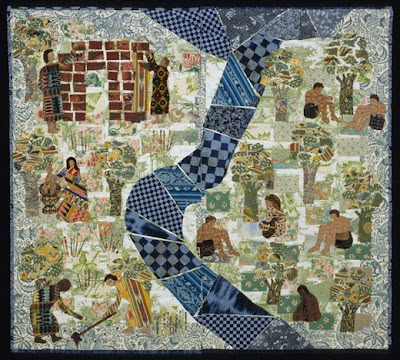
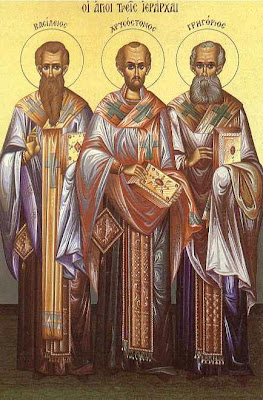
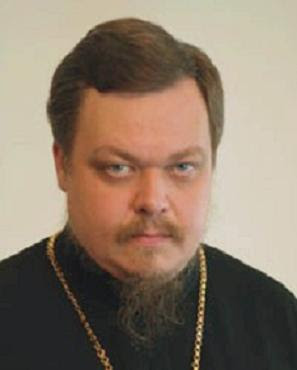


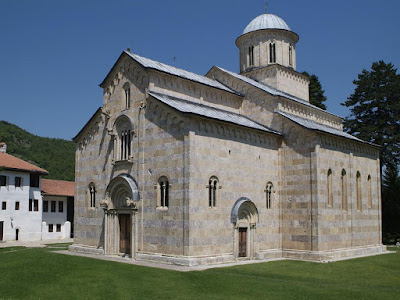










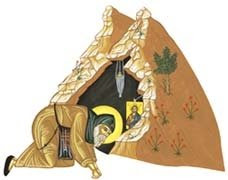
.jpg)
